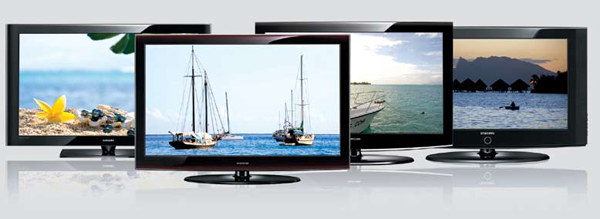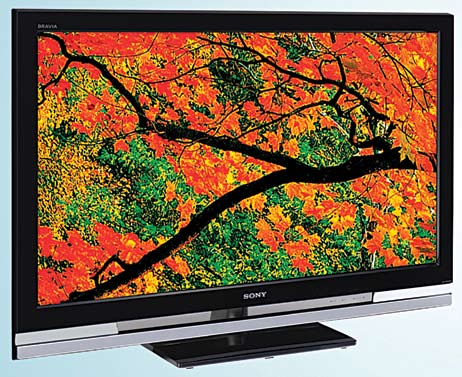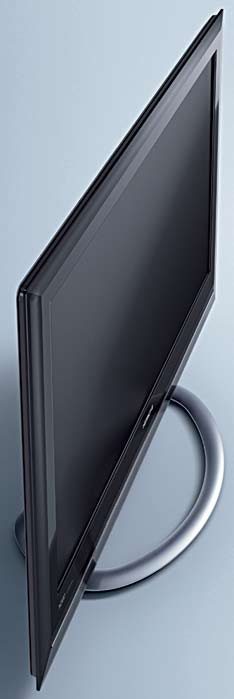MARCH 2009: The highest form of digital television is all set to storm India. The greatest push has come from the government’s announcement that DD (Doordarshan) will broadcast the Commonwealth Games in high-definition (HD) format. HDTV programming through cable/satellite also is coming to India very soon, as the film industry has geared into HD production.
For the end users, HDTV sets are already available in the market. Direct-to-home (DTH) TV operators are trying to switch consumers at a premium for HDTV set-top boxes as INX Media and STAR TV are already producing content on HDTV. This is expected to take off by mid 2009. With so much of activity happening in this space, it is good time to dwell on the subject.
What is HDTV?
There are two modes of TV transmission: analogue and digital. Digital TV comes in standard, enhanced and high-definition formats. Standard has a resolution of 480i, enhanced is 480p, and high-definition is 720p, 1080i and 1080p. Therefore HDTV has the highest-level resolution offered within the digital TV category. We can also infer that HD is digital, but not all digital TV is HD. HDTV has a 16:9 aspect ratio, which is the same as that of a movie theatre screen.
HD resolution is listed in two different forms: “number of lines + type of scan” or “number of pixels” (vertical by horizontal).
Tarun Jain, country head-India, Hitachi Home Electronics, gives a breakdown of the HD formats listed by how manufacturers label them on their product summaries:
• 720p or 720×1280 – 720 lines, progressive scanned
• 1080i or 1080×1920 – 1080 lines, interlaced scanned
• 1080p or 1080×1920 – 1080 lines, progressive scanned

The number of lines/pixels and type of scan matter because more lines/pixels and faster scan equal a better picture. In ranking the HD signal formats, 720p and 1080i are virtually equal in overall resolution, while 1080p is the best. HDTV also provides a cinematic theatre experience with Dolby Digital surround sound.

How does it differ from conventional TV?
Jain explains that high-definition programmes are encoded with a type of resolution: 720p, 1080i or 1080p. The number stands for the amount of lines embedded within the signal. The letter describes the type of scan the television uses to display the picture. The ‘i’ means interlaced and the ‘p’ means progressive.
[stextbox id=”info” caption=”Analogue vs Digital TV”]
In the basic analogue TV, the signals are transmitted as continuously varying radio waves. In fact, the video is transmitted in AM mode, while the audio is transmitted in FM.
Like radio, analogue TV is subject to noise, interference (such as ghosting and snow) and attenuation with distance. In addition, the analogue TV signals require a wide bandwidth for their video and audio signals, which restricts the resolution and overall quality of the image.
On the other hand, digital TV is transmitted as a series of binary numbers 0’s and 1’s (data bits of information). Computer processing is used to compress it, so it can be transmitted in a fraction of the bandwidth taken by the equivalent analogue TV signal. The freed-up extra space can be used for additional video, audio and text signals.
As the signal is basically ‘on’ or ‘off,’ the viewer either sees an image or nothing at all. There is no signal loss due to attenuation as distance from the transmitter increases. In case the viewer is too far from the transmitter, there is nothing to see.
[/stextbox]
The number of lines on a television is important because it allows for greater detail in the image. This is a similar concept to digital photos and how dpi determines print quality.

In the conventional TV system, waves are scanned at 480i. This means that at a given point of time four hundred and eighty (480) lines of pictures are sent by the broadcaster to the television. The lines alternate between odd and even in a succession that is too fast for the human eye.
HDTV sends around a thousand eighty (1080) or seven hundred and twenty (720) lines, which is more than double the conventional TV. By almost doubling the amount of lines in combination with the type of scan, HD essentially nearly doubles the quality of picture.
R. Zutshi, deputy managing director of Samsung India, says that high-definition TVs offer the best TV viewing possible. HD format contains more and finer detail than other formats, so images can have almost lifelike clarity. The picture quality can be stunning, especially on a large, wide-screen set. In technical terms, HD images have higher definition, meaning more picture elements (lines or pixels) make up each image.
HDTV provides wide-screen picture quality with compact disk (CD) sound quality. It has over twice the sharpness and clarity of analogue TV broadcasts together with a far superior colour resolution. With HDTV, problems such as double images from ghosting or multi-path, snow caused from a weak signal and picture sparkles from impulse noise are a thing of the past. These problems often seen on a conventional television broadcast just do not occur on high-definition TV. Also, the sound for conventional TV is only stereo.
However, currently, HDTV broadcast does not take place in India, and the usage of HD resolution is limited to DVDs or other media only, so a high-definition TV is effective if it is used for viewing DVD titles, etc.
What all is required for HDTV reception?
You may ask “Do I need a special TV to be able to see HDTV?” The answer is that only high-definition televisions can display HD content in the HD resolution. Enhanced-definition televisions can display HD content in a 480p resolution, which is DVD quality. All other televisions that are analogue of standard digital will not be able to display HD content in an HD resolution because they lack the technology to do so.
[stextbox id=”info” caption=”Sources of HDTV Signals”]You can receive HD signals from the following sources:
1. Over the air with an antenna. Over-the-air signals are free to receive. However, to receive these signals, you need an HD tuner. Latest HDTVs have an HD tuner built into them. For HDTV televisions without a built-in HD tuner, a separate set-top HD tuner box can be rented from a cable or satellite company, or purchased.
2. Cable or satellite service. To receive HD programming from a cable or satellite provider, you would need to subscribe to their HD package if they have any. This subscription may not be free. The provider might require a minimum length of service. You require a set-top box issued by the cable company, to receive HD content. DishTV and Reliance Communications (BIG TV) are among the satellite TV providers in India who plan to offer HDTV-ready set-top boxes.
3. Blu-ray disk can store over nine hours of high-definition (HD) video on a 50GB disk.
4. A DVD-R can also store up to three hours of HD video content, readable by Blu-ray player, PlayStation 3 video game console or Blu-ray drive installed in a PC, depending on encoder settings.
5. Video game consoles. The latest generation of game consoles is more HD-friendly. While Xbox 360 and PlayStation 3 let you enjoy HD gaming, the Wii will not. The PlayStation 3 also doubles as a Blu-ray movie player.
6. If your computer graphics card supports the standard SVGA resolution, it can be used to output video to an HDTV’s ‘PC input’ jack.
7. The DVI or HDMI interfaces of newer computer graphics cards can be used to output video to an HDTV.[/stextbox]






